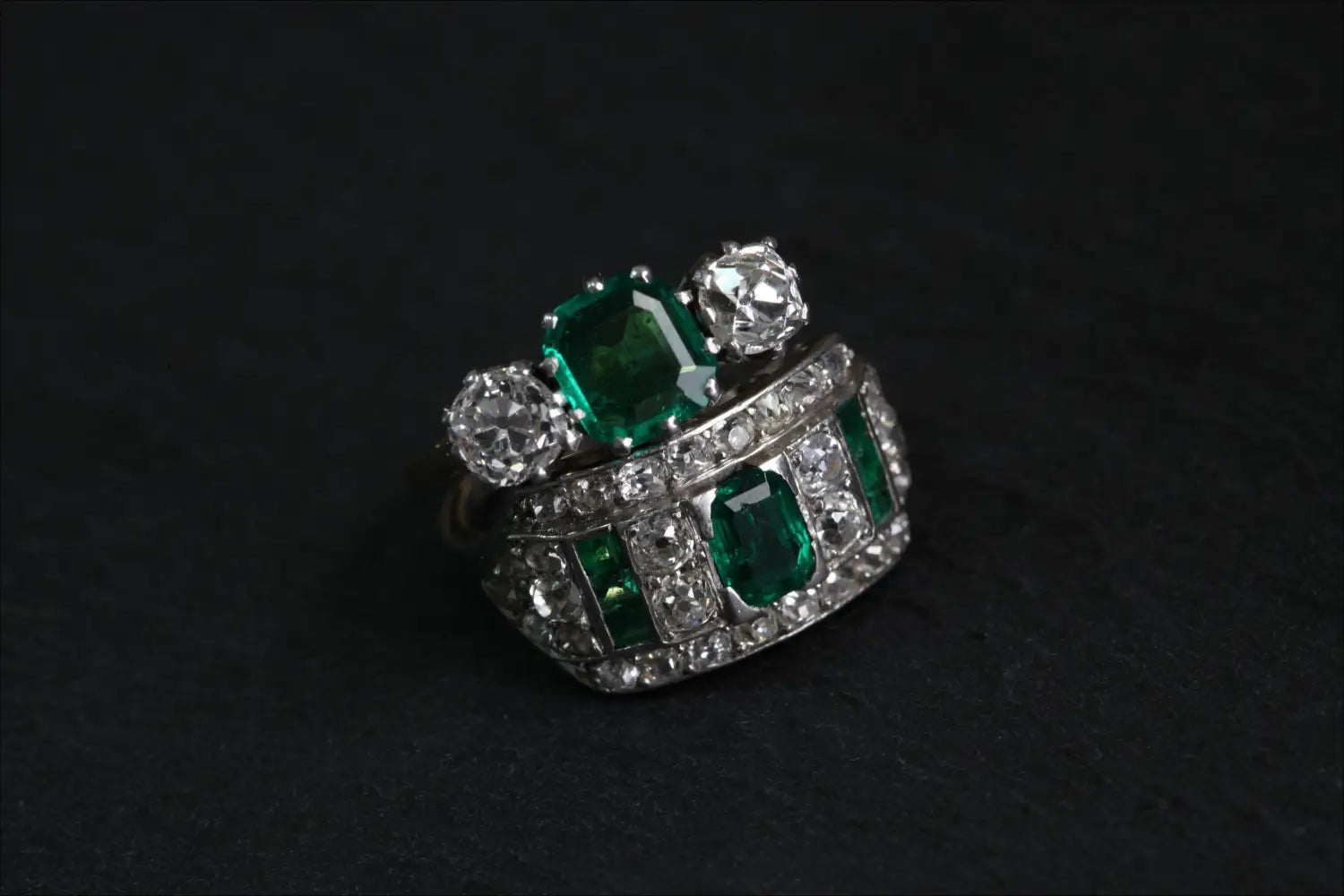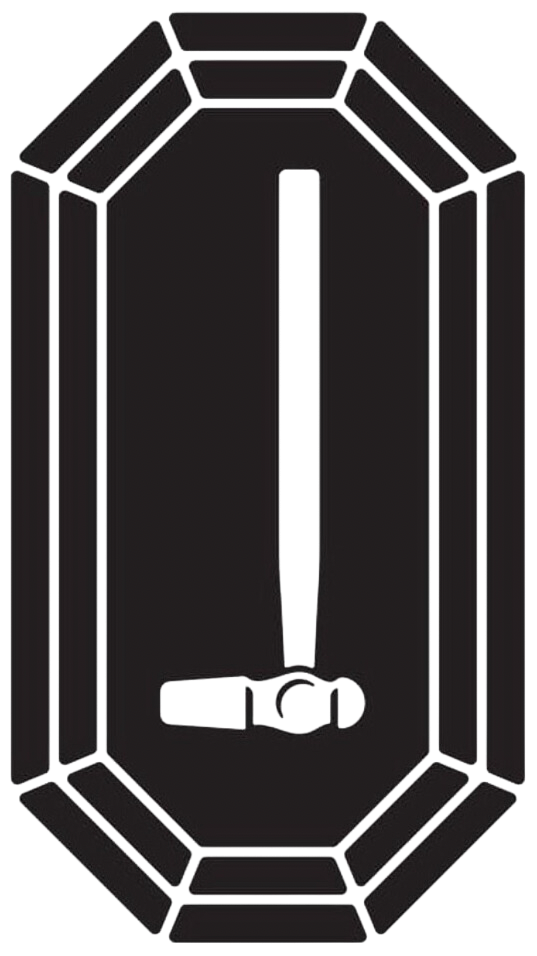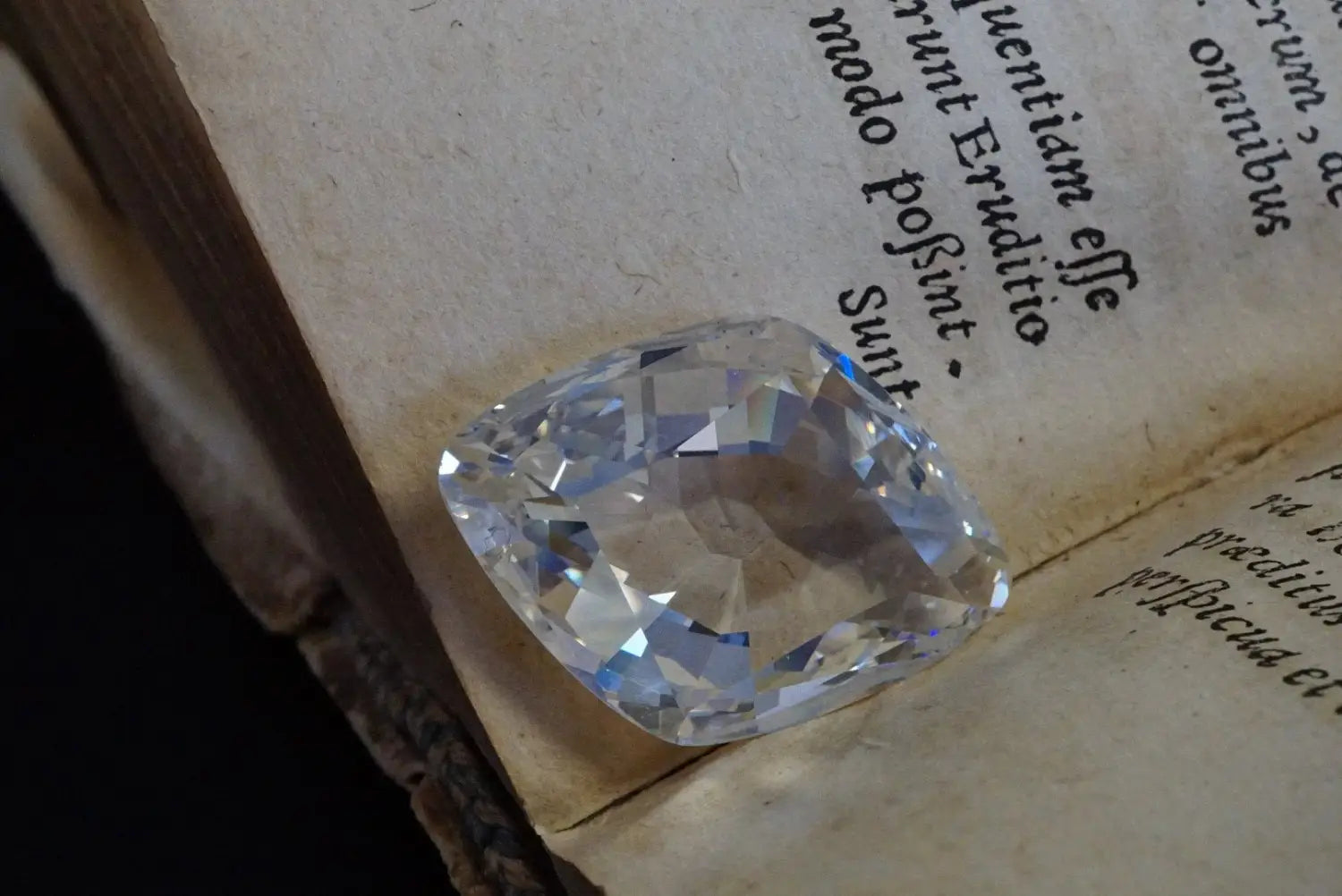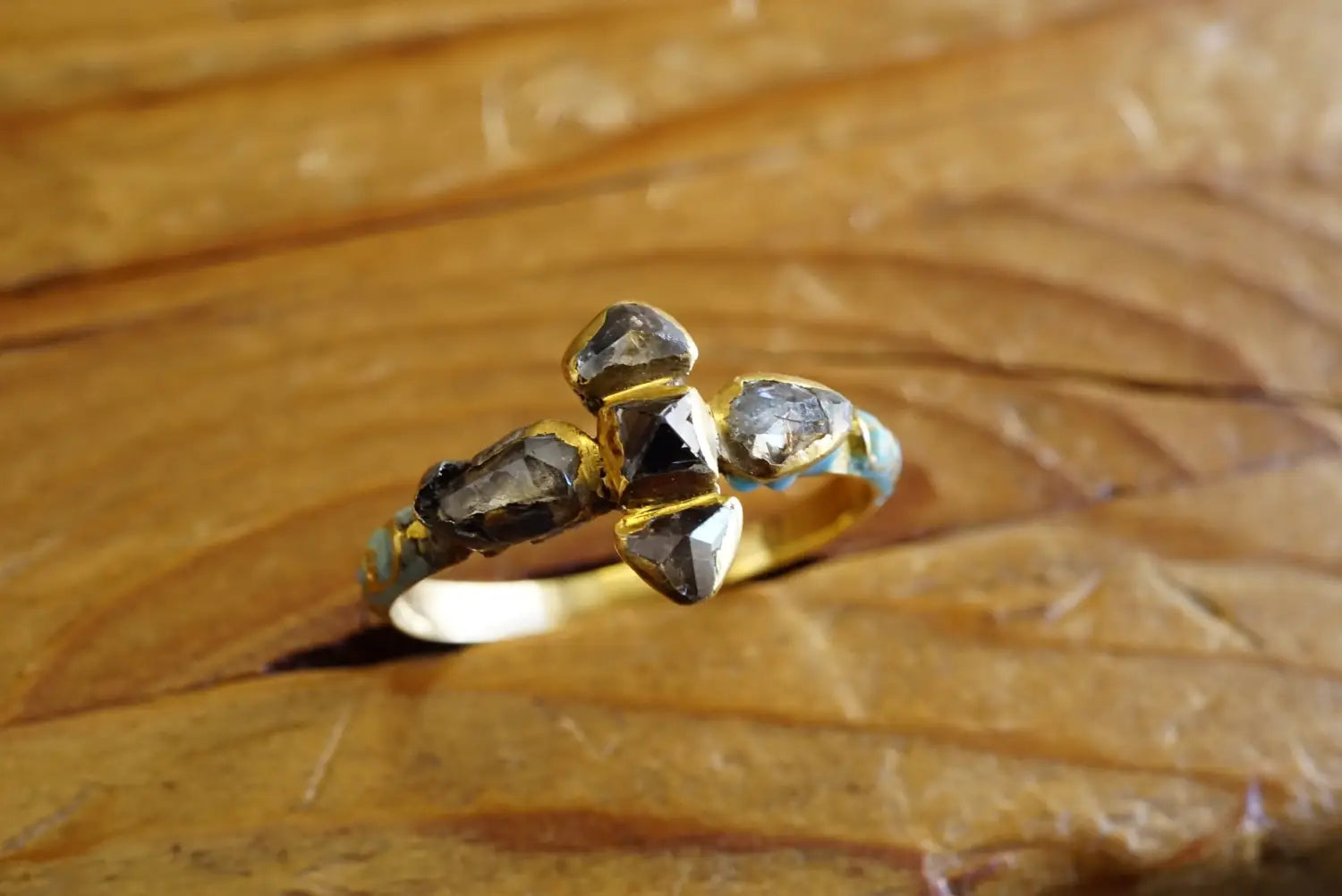
Edwardian vs. Art Deco
Anyone who’s dipped their toes in the jewelry world has undoubtedly heard the terms Edwardian and Art Deco thrown around. And still, you might be wondering: what exactly do these terms mean? While both Edwardian and Art Deco refer to distinct types of design, their meanings go far beyond appearance. Both Edwardian and Art Deco have significance deeply steeped in history; both are linked to some of the most recognizable historical moments and figures. It’s important for any jewelry lover to know the differences between the two, both historically and aesthetically - and I’m here to help.
Edwardian
Let’s begin with Edwardian. King Edward VII ruled over Great Britain from 1901-1910, a mere 9 years - but during his short-lived reign, he was able to influence an entire movement of art and design. Also known as La Belle Époque, the Edwardian Period drew inspiration from the elegant lifestyle shared by Edward VII, his wife Queen Alexandra, and Great Britain’s wealthy elite. It was during this period that jewelry makers, including Cartier, first began incorporating platinum into their pieces, allowing designs to be more intricate than ever before.Compared to other jewelry styles of the time, Edwardian jewelry was chic and understated; subtle and overtly feminine. Edwardian jewelry pieces were distinguishable by their curved lines, floral vines, and oval gems - a seamless and delicate mixture of colors, textures, and shapes.
A Large Edwardian Diamond Pendant in the Jogani Collection
Clovers, bows, hearts, garlands, and horseshoes (to honor Edward VII’s love of horse racing) were common motifs of the time. Edwardian jewelry makers primarily used diamonds, pearls, amethysts, peridots, aquamarines, and blue sapphires, and their pieces were made to complement the white silk and lace that was often donned by wealthy women of the time.

Many Edwardian pieces feature a horseshoe shape, a symbol of King Edward VII's love for horse racing (photo source: 1stdibs.com)
A Pair of 12.04 ctw Edwardian Old Mine Cushion Diamond Dormeuse Earrings
After more than a decade of artistry and opulence, the Edwardian period came to an abrupt end. Edward VII died of a heart attack in 1910, and four years after his death, World War I broke out. Almost overnight, the jovial, carefree spirit of the Edwardian period became a thing of the past. Platinum and other precious metals, which were now being used for weaponry, disappeared from the jewelry world. Collectors hid or sold their most beloved pieces, and the industry wouldn’t experience a revival until after the war. And that brings us to our next movement: Art Deco.
Art Deco
Though Art Deco-esque pieces were seen as early as 1910, the movement really took off in 1918, making its way well into the 1920s and 30s. Following a period of scarcity and conflict, the Roaring Twenties were a vibrant breath of fresh air. With the end of the war, sparkle and flair were reintroduced to the mainstream, and women were more liberated than ever before.
An Art Deco platinum and diamond brooch by Cartier from the Jogani collection
Throughout the next few years, women would abandon any frilly, too-tight clothing in favor of shorter hemlines and breezier silhouettes - and as the fashion industry evolved, the jewelry world followed suit. The sharp, clean lines and bold geometric shapes of Art Deco pieces provided a strong contrast to the feminine opulence of the Edwardian era. The jewelry, though intricate, became more streamlined and linear, and jewelry makers rejected large gemstones, clunky designs, and anything else that seemed impractical or unnecessary. Overall, Art Deco designers sought to create an aura of order and structure - a perfect balance between form and function.

Art Deco pieces feature sharp, clean lines, geometric shapes, and a bold use of color - a strong contrast from the gentle, feminine nature of Edwardian pieces
(Sold from the Jogani Collection)
A gorgeous Art Deco jabot pin, by Cartier
Like their Edwardian predecessors, Art Deco designers made good use of platinum. White gold also rose in popularity, and jewelry makers boldly combined gems like onyx, emerald, ruby, and jade. The sleek, geometric look of Art Deco was also reflected in the furniture and architecture of the time. The Chrysler Building in New York, which was built in 1928, is one of the most iconic Art Deco landmarks to this day.

Though the Art Deco style has remained popular throughout the years, a true Art Deco piece is one that was made in the period between World War I and World War II. The freedom and fearlessness of the era can be felt in every design; each piece of jewelry symbolizes a clean break from the past and a fervid desire for something new.
Both Edwardian and Art Deco pieces have something special to offer, and though different in design, each movement is equally rich in meaning. When shopping for antique jewelry, it’s important to keep in mind the history behind each piece. The treasures you come across are more than just eye-catching; they’re powerful memoirs: landmarks of space and time.


